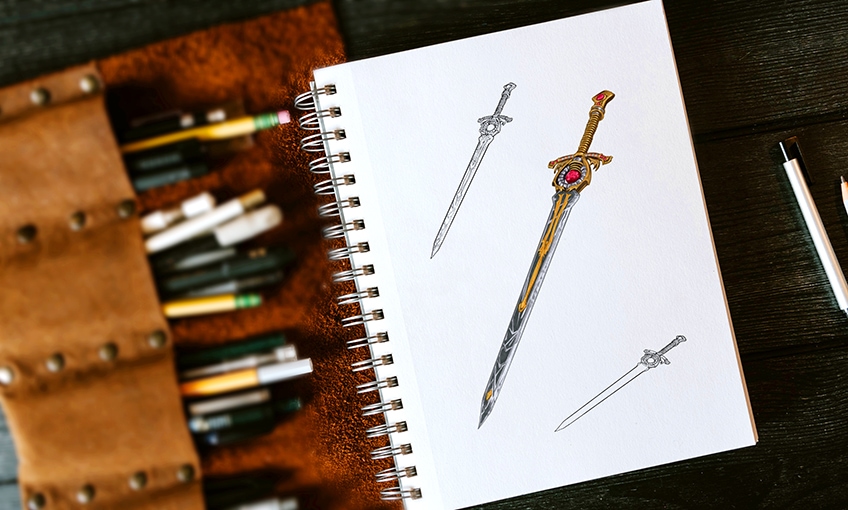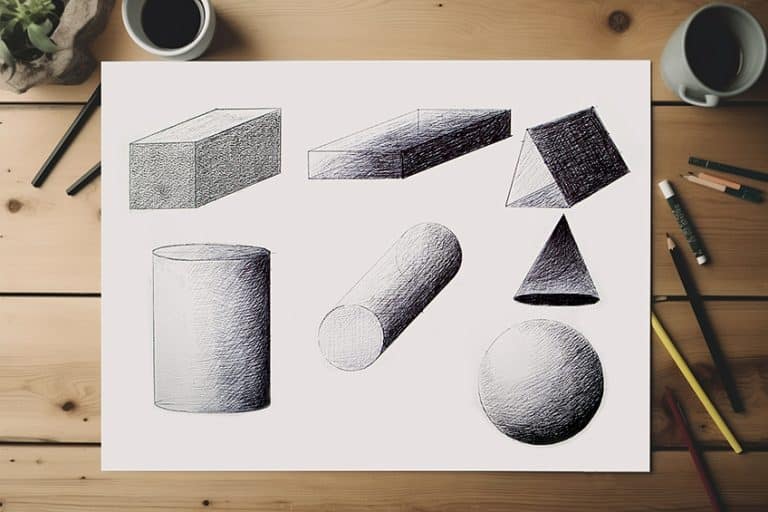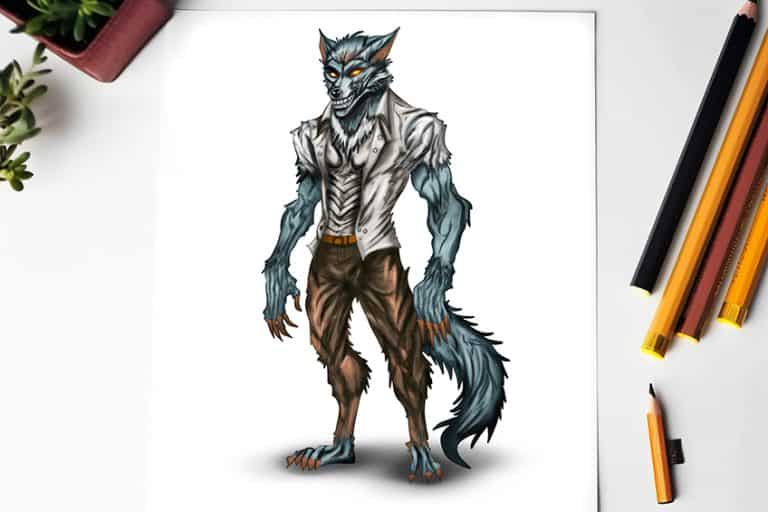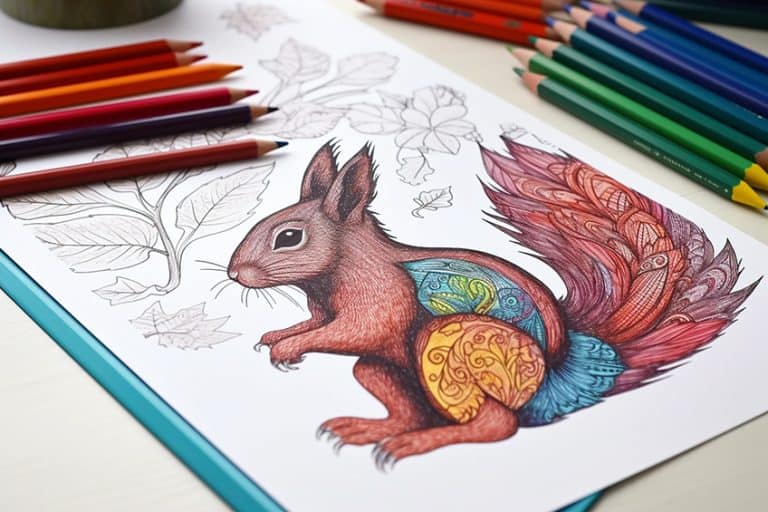How to Draw a Sword – Create a Fun Drawing of a Sword
Have you ever wanted to learn how to draw a jeweled sword fit for a knight? In today’s drawing tutorial, we are going to show you exactly how to do that! Follow our easy step-by-step instructions and by the end of our guide, you will be left with your very own drawing of a sword. Select the drawing supplies that you will be using for your sword and let us get started!
Follow Our 15 Steps to Make Sword Drawing Easy
If you answered “yes” to wanting to draw your own realistic sword, you have come to the right place! Join us as we take you through our detailed step-by-step guide that covers how to draw a sword, the full coloring process that you will complete, as well as how to add detailing to your sword drawing.
The collage below details each of the steps that we will be going through today, and demonstrates what your sword sketch should look like at every stage.
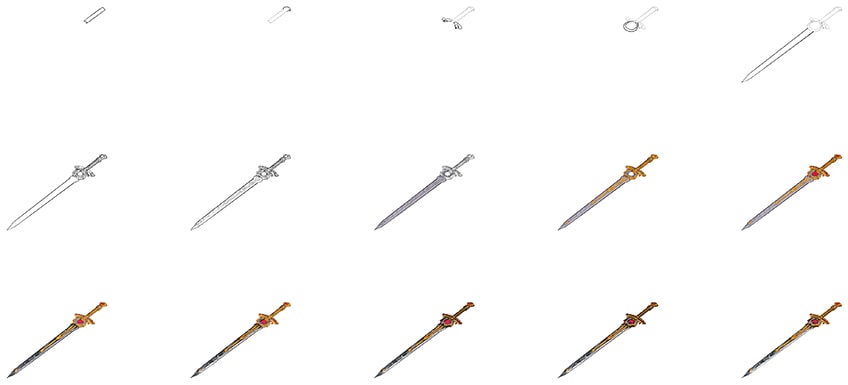
Whether you are wanting to draw swords, or merely just a single sword, the choice is up to you! Follow our instructions and get creative. Our tutorial is written for a painting medium, but you can select any medium you would like for the coloring process.
Step 1: Drawing the Handle
In order to create your sword drawing, you will first need to locate the center of your drawing area. This is where your sword sketch will be placed. Once you have found the middle, draw the handle of your sword to the right of the center.
The handle will be represented by a narrow cylinder.
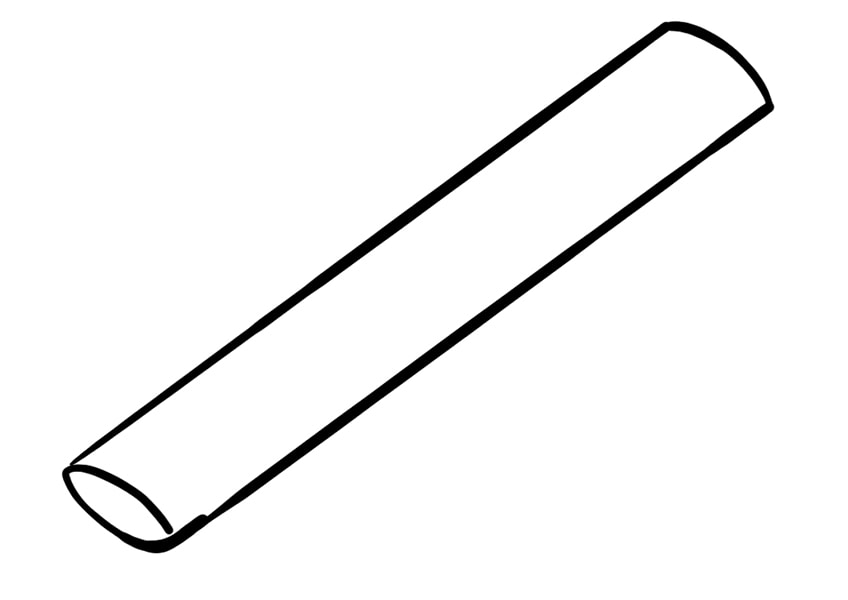
Step 2: Sketching the Pommel
Once your handle has been drawn, you will need to add the pommel. The pommel is basically an edge or design that is attached to the end of a sword to prevent it from slipping from the hand while fighting. In order to do this, simply draw a narrow oval shape at the end of the handle.
Do not make your pommel too big!
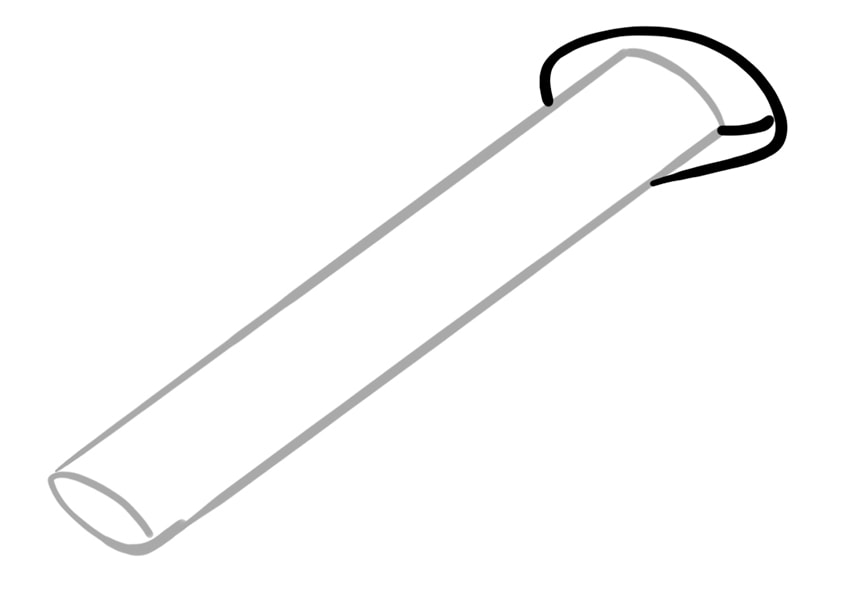
Step 3: Adding the Guards
You will now be moving on to the guards, which are found on either side of the sword. At the bottom of the handle, which you drew in step one, outline two guards with a protruding edge, remembering to keep it to scale with the rest of your drawing.
Draw your guards with a wing-like design.
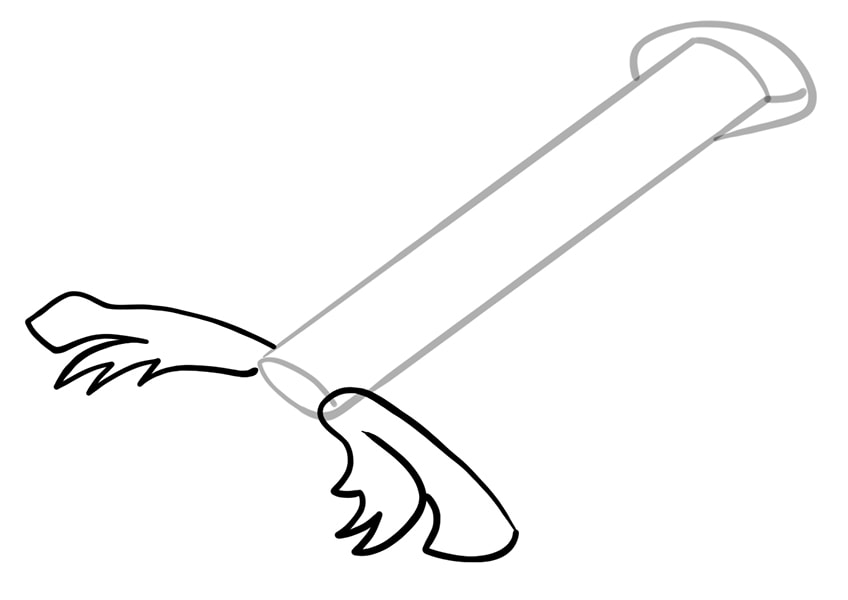
Step 4: Shaping the Handle Design
Between the two guards which you have just drawn, sketch two oval shapes. One oval should be slightly larger, with a smaller one inside. This is to represent the handle’s design, which is the attachment point to the rest of the sword.
Since you are drawing a warrior sword, this space will be decorated with a jewel.
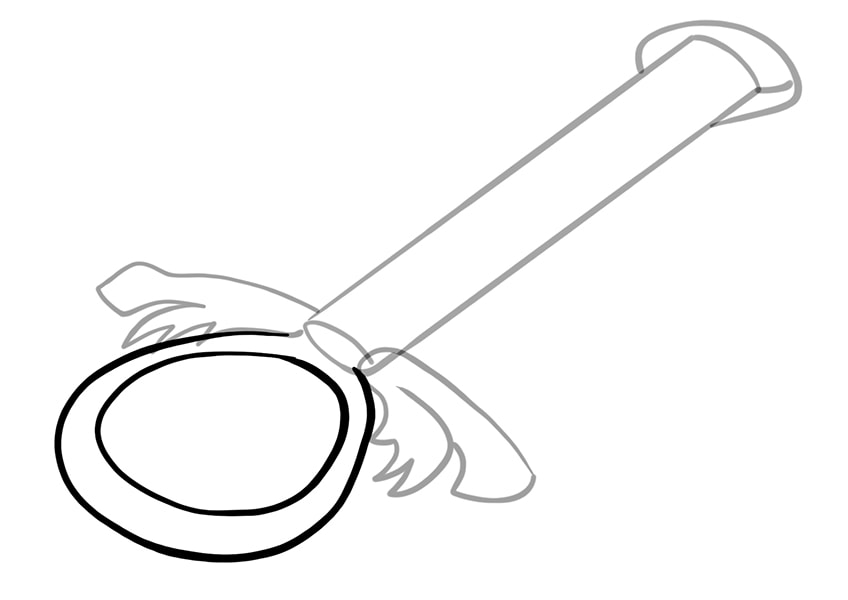
Step 5: Drawing the Blade
Now that your handle has been completed, you will be moving on to the blade part of your sword. In this step, draw a long blade that protrudes from the handle attachment.
End off your blade with a sharp point.

Step 6: Adding the Outlines and Details
This is possibly the biggest step in your drawing of a sword, as you will be adding the outlines and details to everything that has been drawn. Outline the blade (adding two boulting edges on the sides), the handle, and the guards. Once you have finished, draw the pommel with a small oval shape to represent the jewel, with several looping curved lines around the handle.
Draw fine details on the guards, making sure to sketch them as symmetrical as possible. Include small oval shapes on this section as well to represent the jewels attached to the guards. Complete this step by drawing a big jewel and several smaller stones within the arch of the handle.
If you still see any visible construction lines, you can erase them.
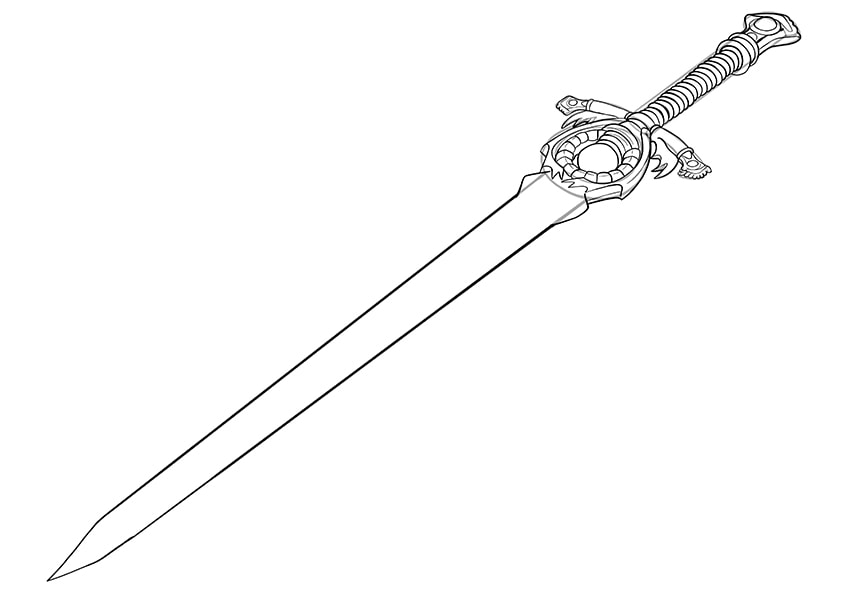
Step 7: Creating the Texture
You will now be adding texture to the guards and blade. On the guards, draw a similar grip to the handle with several looping curved lines.
Over the entire blade, draw fuller indent and texture markings.

Step 8: Applying the First Coat of Color
Now that all of the outlining is complete, you will be adding your first coat of color to your sword drawing! Using a fine brush, select gray paint to color in the entire blade, the stones within the attachment oval, and the guard’s grips. Make sure to leave an unpainted space between each colored grip.
To complete this step, color in the final two grip loops on the handle.
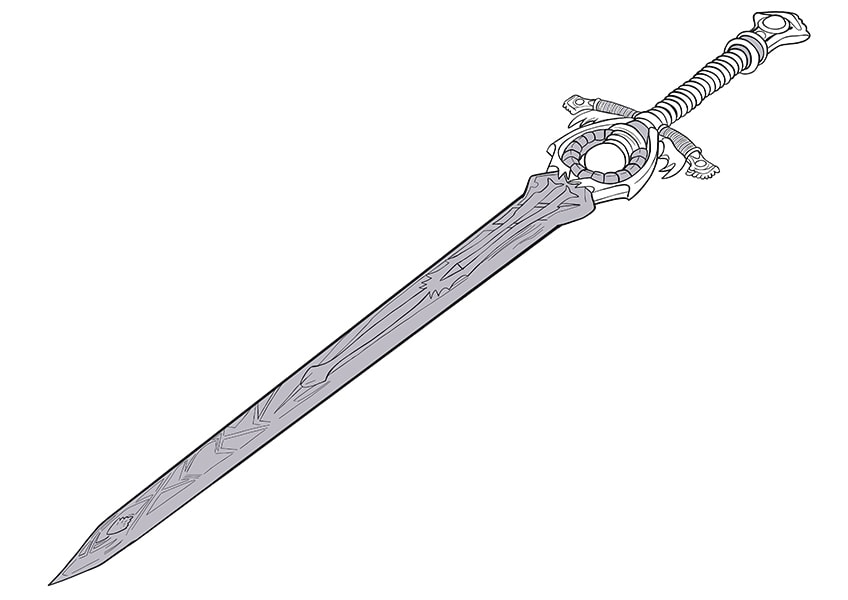
Step 9: Adding the Second Coat of Color
Making use of a fine sharp brush, select gold or dark yellow paint. This will be used to color the pommel, the handle grip, and the blank loops on the guards, including the handle attachment. Once you have finished this, paint the fuller indent of the sword and blade end with your chosen color.
Remember to leave the jewel in the handle attachment unpainted.

Step 10: Coloring in the Details
You will now be focusing on the details of your sword sketch. Using a fine sharp brush, select a shade of punch pink paint to color in the main jewel located in the handle attachment. With the same color, paint the four loops on each guard, as well as the two jewels on each grip.
Color in the final two jewels on the pommel as well.
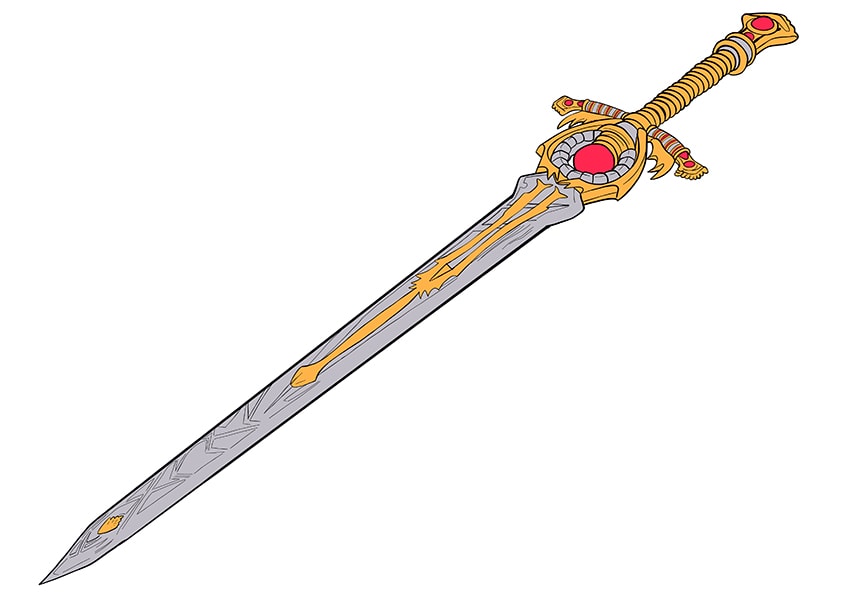
Step 11: Shading the Blade
As your blade has already been painted, you will now add some shading to it. Using a small fine brush and dark gray paint, shade in the texture on the blade.
Be sure to leave some sharp cuts and edges from the first coat of paint visible.
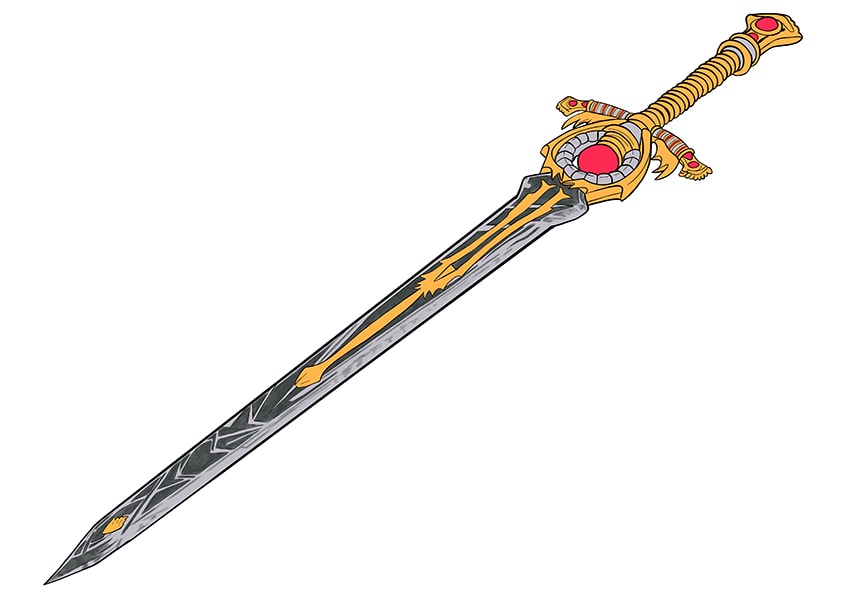
Step 12: Adding Highlight and Shading to the Details
Using a small soft brush and some white paint, brush realistic scratch and cut marks against the blade’s sharp edges. Once completed, select a different soft brush and black paint to gently apply shading to the fuller indent of the blade, the stones within the handle attachment, and the grey loops at the top of the handle.
To finish this step, use a blending brush and white paint to create a more realistic color fade and smear.
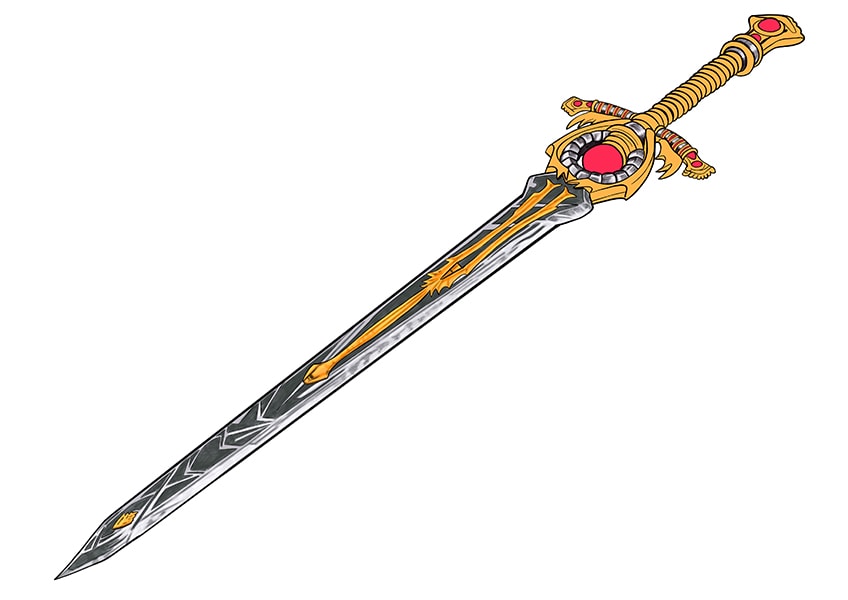
Step 13: Shading the Handle and Guards
This step is crucial to make sure that our sword looks realistic! With a soft small brush and some black paint, enhance the shading between the edges, loops, and curvatures on the handle, grip, pommel, guards, and handle attachment.
If you think an area should be darker or shaded, add some more! This will create a more realistic texture and color.
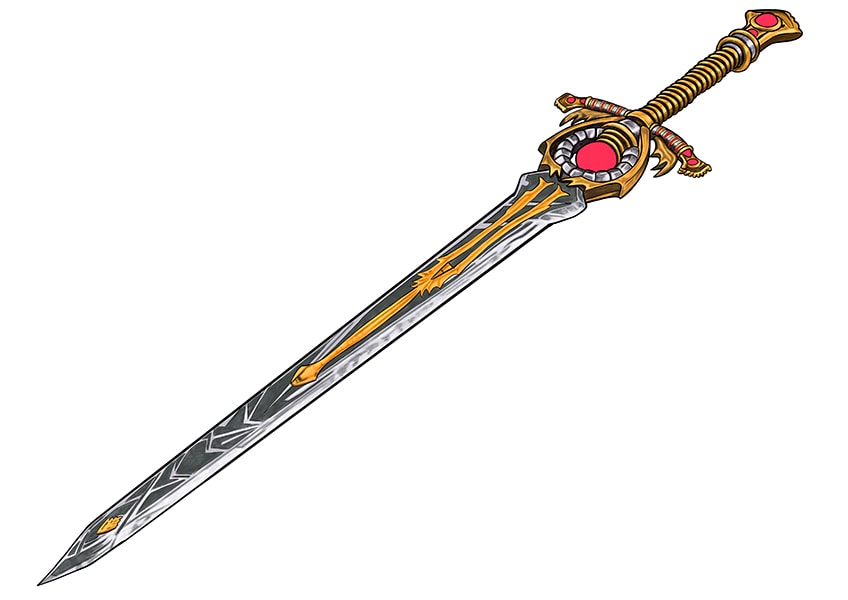
Step 14: Emphasizing the Shading on the Jewels
You will now be focusing on the jewels in your sword sketch. Take a soft brush and black paint to create some shade around each jewel.
Add a final highlight by using a small soft brush and some white paint to gently apply a stroke or two of shimmer.
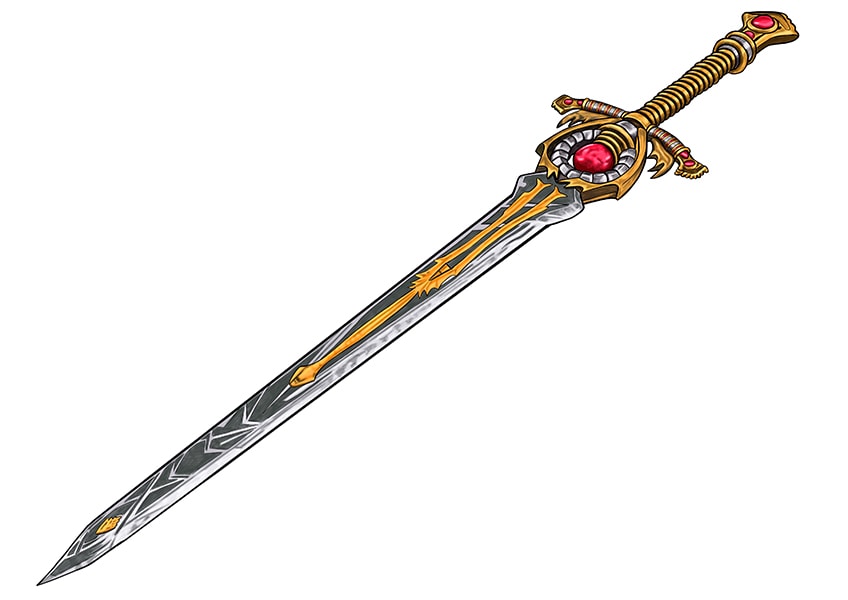
Step 15: Finishing Up the Sword Drawing
To finish off your sword drawing, our final step is optional. However, if you do not want a drawing with a visible and harsh outline, we suggest that you follow along. Simply take a fine sharp brush and trace over the entirety of the sword, including the texture and detail lines, with the corresponding color to the area being traced.
You should now be left with a completely seamless sword drawing!

And that is how you make a sword drawing easy! We have reached the end of our step-by-step guide on sword drawing, where you will have learned everything that you need to know to recreate these beautiful drawings again. We hope that you have enjoyed our tutorial and that you will join us again for more exciting and easy guides in the future!
Frequently Asked Questions
Is It Easy to Learn How to Draw a Sword?
Yes, it is! In the above guide, we have provided 15 straightforward instructions for you to follow in order to draw swords that are fit for a knight. While drawing may seem daunting at the start, our tutorials will help you navigate each step until you have completed your very own drawing.
What Colors Do I Need for My Sword Sketch?
What is so great about the sword drawing tutorial is that you can choose any color you wish! If you would like your sword sketch to closely resemble ours, we suggest that you select the same colors as us. However, if you are wanting to use different colors, go for it! There are no limits to your creativity here.
Matthew Matthysen is an educated multidisciplinary artist and illustrator. He successfully completed his art degree at the University of Witwatersrand in South Africa, majoring in art history and contemporary drawing. The focus of his thesis was to explore the philosophical implications of the macro and micro-universe on the human experience. Matthew uses diverse media, such as written and hands-on components, to explore various approaches that are on the border between philosophy and science.
Matthew organized various exhibitions before and during his years as a student and is still passionate about doing so today. He currently works as a freelance artist and writer in various fields. He also has a permanent position at a renowned online gallery (ArtGazette) where he produces various works on commission. As a freelance artist, he creates several series and successfully sells them to galleries and collectors. He loves to use his work and skills in various fields of interest.
Matthew has been creating drawing and painting tutorials since the relaunch in 2020. Through his involvement with artincontext.org, he has been able to deepen his knowledge of various painting mediums. For example, watercolor techniques, calligraphy and lately digital drawing, which is becoming more and more popular.
Learn more about Matthew Matthysen and the Art in Context Team.


